Monday, 5th September 2022
India overtakes the UK as the world’s fifth-largest economy
In News
India has become the world’s fifth-largest economy after it overtook the United Kingdom in end-March 2022, according to the latest calculations by Bloomberg.
About the News:
- India now boasts the fifth-largest economy in the world, surpassing the UK.

-
- India was the eleventh-largest economy ten years ago, while the UK was the fifth-largest.
- Only the US, China, Japan, and Germany are currently ahead of India.
- According to a Bloomberg report, 75 years after achieving its independence at midnight, India today has a larger economy than its former colonial overlord.
Key Highlights of the Report
- India's economy is presently the fifth largest in the world
- By 2029, it's expected to grow to be the third biggest.
- Indian economy's size
- The nominal cash size of the Indian economy in the quarter through March was $854.7 billion on an adjusted basis and using the dollar exchange rate on the last day of the relevant quarter.
- The UK was $816 billion on the same basis.
Comparison between India and UK
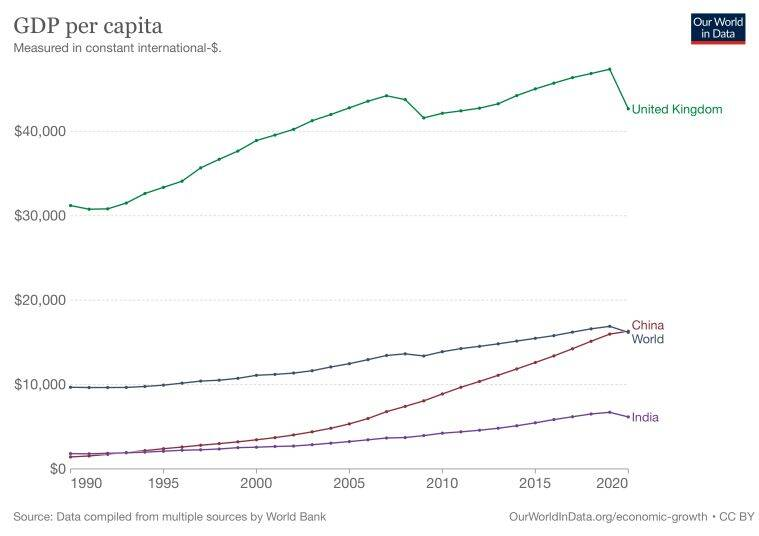
- Population
- One of the biggest contrasts between the two nations is the population.
- India's population is 41 billion as of 2022, compared to the UK's 68.5 million. In other words, there are 20 times as many people in India as there are in the UK.
- Per capita GDP
- Given the enormous demographic disparity between the two nations, India's GDP per capita is much smaller.
- Poverty Levels
- At the start of the 19th century, the UK had a much higher proportion of its population living in abject poverty than did India.
- Even though India has achieved significant progress in reducing poverty, the relative positions have now reversed.
- Human Development Index
- On this front, analysts predict that it may still take India ten years to catch up to the UK in 1980.
- UK performance in HDI 2019: 0.932 (score), very high category (HDI tier)
- India scored 0.645 (score), in the medium group, on the HDI in 2019. (HDI tier).
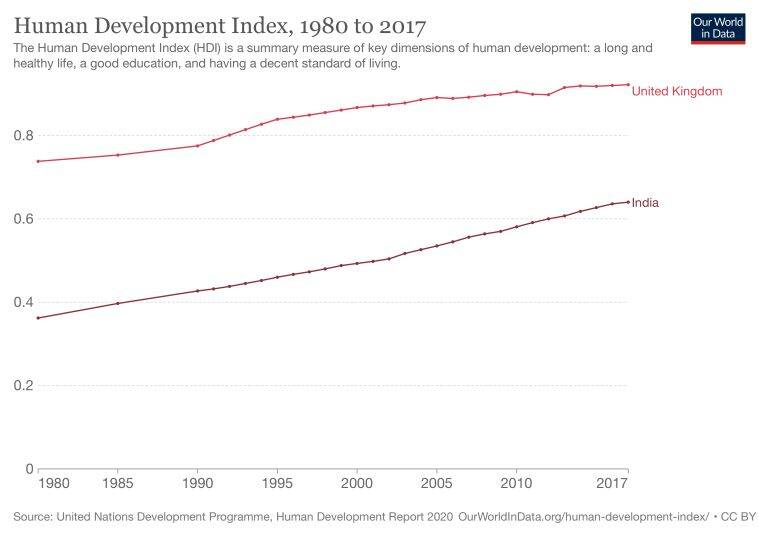
- Universal Health Coverage
- There is still a long way to go, even if India's faster economic growth and the government's policy focus on healthcare programmes since 2005 have made a noticeable improvement.
Content Source link:
- https://www.bloomberg.com/news/articles/2022-09-02/uk-slips-behind-india-to-become-world-s-sixth-biggest-economy
- https://indianexpress.com/article/explained/explained-economics/india-economy-united-kingdom-population-gdp-poverty-development-healthcare-8128417/,
Image Source link:
- https://www.business-standard.com/article/international/britain-slips-behind-india-to-become-world-s-sixth-biggest-economy-122090201365_1.html,
Click the link below to attempt the daily MCQs and the Mains based questions.
India commissions its first Indigenous Aircraft Carrier
In news
Recently, the Prime Minister commissioned the first indigenously designed and built aircraft carrier INS Vikrant at Cochin Shipyard Limited in Kochi.
About INS Vikrant
- The first indigenously designed and built aircraft carrier for the Indian Navy, Vikrant is the largest warship ever constructed in India.
- India is now part of a select group of countries with the capacity to design and construct these massive, powerful warships.
- The Warship Design Bureau (WDB), the Navy's in-house organization, designed the warship, which was delivered to the Navy by the manufacturer, Cochin Shipyard Ltd (CSL), a public sector shipyard run by the Ministry of Ports, Shipping & Waterways.
- When fully laden, the 262 m long by 62 m broad "Vikrant" can carry 7500 nautical miles while travelling at a maximum planned speed of 28 knots, or roughly 52 km/h.

- For a crew of about 1,600, the ship features about 2,200 compartments, including specialized quarters for female officers and sailors.
- The carrier's machinery operations, ship navigation, and survivability are all highly automated in the design and is outfitted with cutting-edge technology and equipment.
- It has the most up-to-date facilities for medical equipment, such as major modular OT, emergency modular OT, physiotherapy clinic, ICU, laboratory, CT scanner, X-Ray machines, dental complex, isolation ward, and telemedicine capabilities.
Why the name Vikrant?
|
History of INS Vikrant
|
- It was acquired from the United Kingdom in 1961 and served as India's first aircraft carrier.
- The INS Vikrant was crucial in the 1971 war with Pakistan that led to the formation of Bangladesh. In 1997, it was decommissioned.
- The name of her legendary predecessor will now be attached to India's first homegrown aircraft carrier.
Significance
- The warship will play a crucial role in the Indian Navy's effort to position itself as a force capable of projecting its strength on far-off seas after its induction.
|
Other Aircraft Carriers Across the World
|
- It is especially crucial in light of India's efforts to serve as a net security provider in the Indian Ocean region, where it competes with China's navy, which is primarily focused on aircraft carriers and has already enrolled two warships.
- India will now have two operational aircraft carriers with the commissioning of INS Vikrant (the other is INS Vikramaditya), which would improve the country's maritime security.
Issues
- Import dependence: Any Warship has three components. The Indian navy has achieved:
- FLOAT (90% indigenization)
- MOVE (60%)
- FIGHT (only 30%)
- Overruns in Cost and Time: For instance, INS Vikrant was supposed to be inducted by 2017. More than ten years after its purchase, the INS Vikramaditya entered service.
- Outdated technology: There are 15 conventional submarines in the Navy at the moment, and each one needs breaking surfaces to recharge its batteries (it lacks an air-independent propulsion system).
India must consider implementing a long-term indigenization plan investment and developing a vital independent subsystem. Artificial intelligence and machine learning should be used to improve Underwater Domain Awareness (UDA), and more private industry participation in design, production, and maintenance should be encouraged.
Content Source link:
- https://indianexpress.com/article/india/ins-vikrant-pm-modi-atmanirbhar-bharat-indigenous-aircraft-8126375/#:~:text=Commissioning%20the%20country's%20first%20indigenously,reflection%20of%20India%20becoming%20self%2D,
Image Link:
- https://indianexpress.com/article/explained/the-importance-of-iac-1-the-made-in-india-aircraft-carrier-7438715/
Click the link below to attempt the daily MCQs and the Mains based questions.
Clearance for Transferring Forest Land in India
In news
The Chhattisgarh government in March 2022, had announced in the Budget speech that the state government has transferred over 300 sq km of land in the Bastar region, from the Forest department to the Revenue department to ensure easy availability of land for setting up industries and building infrastructure.

About the issue
- Earlier, Chhattisgarh did not seek forest clearance for transferring the land, which the state claims is non-forest land handed over “by mistake” to its Forest department.
- But, the Union Environment Ministry has pointed out that the land in question is “undemarcated protected forests”, which cannot be given away without forest clearance.
Forests in India
- Forests are the second largest land use in India next to agriculture.
- The Supreme court defines forests to include all forests statutorily recognised under the Forest (Conservation) Act, 1980.
- According to the ‘India State of Forest Report 2021’ prepared by the Forest Survey of India (FSI), the total forest and tree cover of the country is 9 million hectares which is 24.62% of the geographical area of the country.
- The assessment also reveals that 17 states/UTs have above 33% of the geographical area under forest cover.
- Area-wise, Madhya Pradesh has the largest forest cover in the country.
Forest conservation in India
Constitutional provisions
- Fundamental Duties - Article 51-A (g), says that “It shall be the duty of every citizen of India to protect and improve the natural environment including forests, lakes, rivers and wildlife and to have compassion for living creatures.”
- Directive principles - Article 48 -A says that “the state shall endeavour to protect and improve the environment and to safeguard the forests and wildlife of the country”.
- Fundamental Rights - Articles 21, 14 and 19 of this part have been used for environmental protection.
- Public Interest Litigation under Articles 32 and 226 of the constitution of India resulted in a wave of environmental litigation.
Legislations
- Indian Forest Act, 1927 was enacted with the following objectives:
- To consolidate the laws relating to forests.
- Regulation of and the transit of forest produce. And,
- To levy duty on timber and other forest produce
- The 42nd Amendment to the Indian Constitution of 1976 moved forests from the State List to the Concurrent List of the Constitution. This gave powers to the Union Government to administer forests along with the state governments.
- Forest Conservation Act, 1980, was enacted in response to the rapid decline in the forest covers in India, and also to fulfil the Constitutional obligation under Article 48-A.
Policies:
- National Forest Policy of 1988 was the turning point of Forests Management in India, and this broadly focused on environmental stability, restoration of ecological balance and preservation of biological diversity of the country.
- To keep up with changes, the Government announced the draft National Forest Policy Bill in 2018, which aims to address the new issues of climate change, human-animal conflict and the decline of green cover.
- The draft aims at bringing one-third of the demography of India under the forest cover through scientific interventions and for enforcement of strict rules to protect these covers.
Jurisdiction to transfer Forest Land
- Broadly, state Forest Departments have jurisdiction over two types of forests notified under the Indian Forest (IF) Act, 1927:
- Reserve Forests (RF), where no rights are allowed unless specified
- Protected Forests (PF), where no rights are barred unless specified
- The Forest Conservation Act, of 1980, applies to all kinds of forests, and it requires statutory clearance before forests can be used for any non-forest purpose such as industry, mining, or construction.
- And, Clearance for non-forest use of forestland under the FC Act requires giving back twice the area for compensatory afforestation (CA) from Revenue to Forest.
Source:
- Forest Survey report 2021 released; increase of 2,261 sq km in the total forest and tree cover of the country in last two years.
- Environment Protection under Constitutional Framework of India
- Forest Laws in India – Policy and Assessment
- Explained: Chhattisgarh’s forest ‘by mistake’
Image source:
- https://fsi.nic.in/isfr-2021/chapter-2.pdf
Click the link below to attempt the daily MCQs and the Mains based questions.
Uyghur Muslims - Edukemy Current Affairs
- Context: In its recent report, the United Nations (UN) has accused China of serious human rights violations that may amount to “crimes against humanity” especially pointing to the recent crackdown on Uyghurs and other mostly Muslim ethnic groups.
- The report accuses China of sweeping a million or more people from minority groups into detention camps where many have said they were tortured,sexually assaulted, and forced to abandon their language and religion.
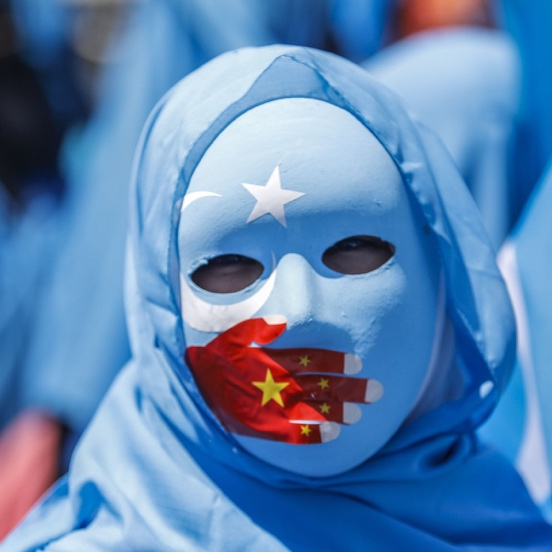
- The Uyghurs are a predominantly Muslim minority Turkic ethnic group, whose origins can be traced to Central and East Asia.
- They speak their own language, similar to Turkish, and see themselves as culturally and ethnically close to Central Asian nations.
- The Uyghurs are considered to be one of the 55 officially recognized ethnic minority communities in China.
- However, China recognizes the community only as a regional minority and rejects them as an indigenous group.
- Currently, the largest population of the Uyghur ethnic communitylives in the Xinjiang region of China.
- A significant population of Uyghurs also live in Central Asian countries such as Uzbekistan, Kyrgyzstan and Kazakhstan.
Source:
- https://indianexpress.com/article/world/chinas-fury-un-accuses-beijing-uyghur-rights-abuse-8125613/
Image source:
- https://www.theguardian.com/news/2018/aug/07/why-uighur-muslims-across-china-are-living-in-fear
Click the link below to attempt the daily MCQs and the Mains based questions.
India's Affordable Cervical Cancer Vaccine
- Context: The Union Minister of Science & Technology has recently announced India’s first “CERVAVAC” for the prevention of cervical cancer.
- CERVAVAC is India’s first indigenously developed quadrivalent human papillomavirus (qHPV) vaccine for the prevention of cervical cancer.
- It was developed by the Pune-based Serum Institute of India in coordination with the Department of Biotechnology (DBT).
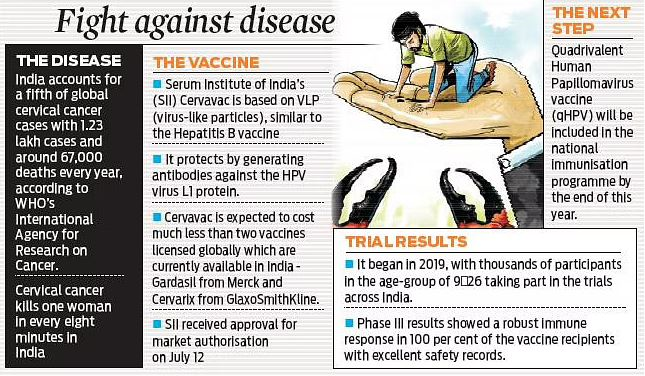
- HPV vaccines are given in two doses and data has shown that the antibodies that develop after both are administered can last up to six or seven years.
- Unlike Covid vaccines, booster shots may not be required for the cervical cancer vaccine.
- Until now, the HPV vaccines available in India were produced by foreign manufacturers at an approximate cost of Rs 2,000 to Rs 3,500 per dose.
- Cervavac is likely to be significantly cheaper, slated to cost approximately Rs 200 to 400.
- It has also demonstrated a robust antibody response that is nearly 1,000 times higher than the baseline against all targeted HPV types and in all dose and age groups.
- Cervical cancer ranks as the 2nd most prevalent cancer in India and accounts for nearly one-fourth of the world’s cervical cancer deaths despite being largely preventable.
- Annually, 25 lakh women are diagnosed with cervical cancer, and over 75,000 die from the disease in India. Close to 83% of invasive cervical cancers in India and 70% of cases worldwide are attributed to HPV-types 16 or 18.
Sources:
- https://www.thehindu.com/news/national/india-made-hpv-vaccine-to-cost-200/article65836179.ece
- https://pib.gov.in/PressReleasePage.aspx?PRID=1856034
Click the link below to attempt the daily MCQs and the Mains based questions.
Typhoon HINNAMNOR - Edukemy Current Affairs
- Context: Super Typhoon Hinnamnor, has been threatening Japan and is believed to be the 2022’s strongest storm. It is expected to approach Okinawa’s main island.
- Typhoons are formed by warm seawater that evaporates and rises before finally condensing into the clouds.
- Earth’s rotation causes a cyclone to spin rapidly in the clockwise direction in the southern hemisphere and anti-clockwise direction in the north of the Equator.
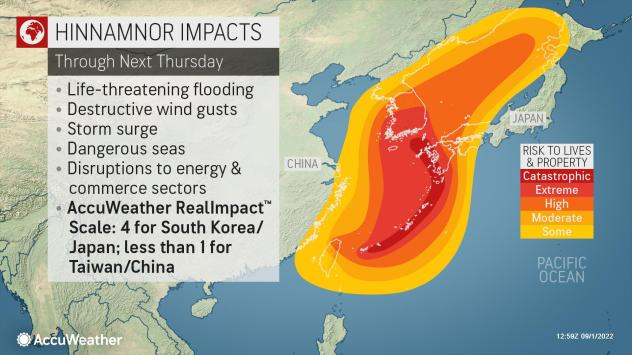
- A typhoon forms an “eye” if it’s extremely strong. In such an event, the air sinks rather than rising into the clouds.
- Atmospheric conditions around Japan’s main island of Honshu are unstable, as warm, moist air flows in from the south. Rain clouds are developing over some parts of the Tokai, Hokuriku and Tohoku regions. Escalation of Hinnamnor is kicked up by warm tropical waters and other pre-existing meteorological disturbances.
- Hinnamnor, has wind speed as high as 198 kilometres per hour near its centre, with gusts of up to 270 kilometres per hour. The typhoon has been upgraded to be as “violent & erratic”.
- Rainfall during the 24-hour-period through Thursday morning is expected to reach up to 150 millimetres in Hokkaido, 120 millimetres in Tohoku, 100 millimetres in Tokai, and 80 millimetres in the Kansai region, resulting in substantial flooding and mud slides.
- Mainland Okinawa and southern islands are set to be hit along with Taipei and Shanghai , and southern parts of South Korea will also be affected alongside the Chinese coast.
Source:
- https://theprint.in/world/super-typhoon-hinnamnor-to-make-landfall-at-okinawas-main-island/1110116/?amp
Image source:
- https://www.accuweather.com/en/hurricane/typhoon-hinnamnor-to-bring-catastrophic-flooding-wind-damage-to-parts-of-japan/1239001
Click the link below to attempt the daily MCQs and the Mains based questions.
Conversion Therapy - Edukemy Current Affairs
- Context: The National Medical Commission (NMC), the apex regulatory body of medical professionals in India has said that “conversion therapy” will be counted as professional misconduct.
- The NMC has also written to all the State Medical Councils empowering them to take disciplinary action against medical professionals if they undertake “conversion therapy”.

- So-called “conversion therapy,” also known as “reparative therapy,” is a range of dangerous and discredited practices that falsely claim to change a person’s sexual orientation or gender identity, or expression.
- Based on the Madras High Court order, it is enlisted under the Indian Medical Council (Professional Conduct Etiquettes and Ethics) Regulations, 2003.
- Such practices have been rejected by every mainstream medical and mental health organization for decades, but due to continuing discrimination and societal bias against LGBTQ people, some practitioners continue to conduct conversion therapy.
- According to experts “Reparative” or “conversion” therapy can lead to depression, anxiety, drug use, homelessness and suicide.
Source:
- https://www.thehindu.com/news/national/nmc-declares-conversion-therapy-to-be-professional-misconduct/article65842557.ece?homepage=true
Image source:
- https://www.ktvu.com/news/france-bans-gay-conversion-therapy-law
Click the link below to attempt the daily MCQs and the Mains based questions.
India’s cyber infrastructure needs more than patches: The Hindu
Essence – The editorial discusses cybercrime considering its rising rate. It highlights the gaps in the legal investigating procedures of these crimes. It mentions some of the court judgements which tried to fill these gaps. It also elaborates on the lack of capacity in the law-and-order system to deal with these crimes.
In the end, the article recommends improving cyberinfrastructure and presses for data localization to improve the turnaround time for investigation. It also recommends building sync between unions and the states as maintenance of law and order is under the state’s exclusive jurisdiction and cybercrime is not bound by any physical or political border.
Why should you read this editorial?
- To know about various court judgements related to cybercrime
- To know about the status of cybercrime in India
Source:
- https://www.thehindu.com/opinion/op-ed/indias-cyber-infrastructure-needs-more-than-patches/article65842178.ece
Click the link below to attempt the daily MCQs and the Mains based questions.
The road to energy Atmanirbharta: Indian Express
Essence - In the wake of the Prime Minister’s call for ‘energy atmanirbharta’, the article highlights that it should not be read as energy ‘self-sufficiency’ but as ‘strategic autonomy’. Further, it mentions the need for leadership to balance short-term pressures of election and long-term imperatives for sustainability.
The article outlines ten points that are important for India to achieve energy atmanirbharta. These include clearly defined goals, prioritized access to fossil fuels while actively developing building blocks for the green economy, infrastructure development, green initiatives, addressing conservation and efficiency issues, retraining and upskilling, energy diplomacy, holistic governance, and political statesmanship.
Why should you read this article?
- The article is must read to understand bottlenecks to achieve the target of energy atmanirbharta.
- The article provides a realistic analysis of the present energy situation in the country while providing a tentative plan for the road ahead.
Source:
- https://indianexpress.com/article/opinion/columns/the-road-to-energy-atmanirbharta-8131158/lite/
Click the link below to attempt the daily MCQs and the Mains based questions.
Hyderabad Liberation Day - Edukemy Current Affairs
In news
The Central Government has decided to mark Hyderabad State Liberation Day on September 17, while Telangana would be observing it as National Unity Day.
About the day
- When India gained independence in 1947 and Pakistan was formed, the British gave the remaining princely states a choice to merge with either union or stay independent. One of the largest princely states within the Indian union was Hyderabad, a Hindu-majority region ruled by a Muslim Nizam.
- The Nizam of Hyderabad, Mir Osman Ali Khan, was in a dilemma on whether he should join the Indian union or stay independent. On the other hand, the Majlis-e-Itihadul Muslimeen (precursor of present-day AIMIM) was adamant about the Nizam merging with Pakistan instead of being Independent.
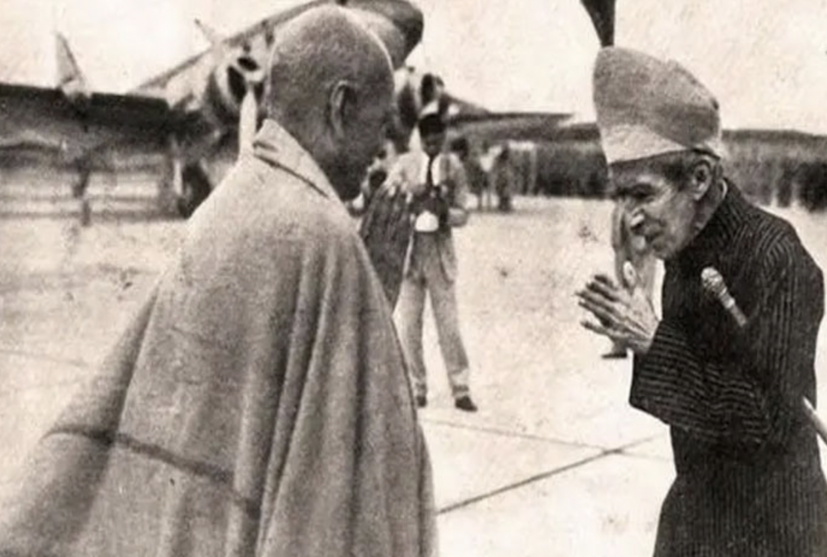
- Being no more than a puppet to the MIM, the Nizam agreed to keep Hyderabad independent of either union.
- The state of Hyderabad under the Nizam included the whole of current day Telangana, the Marathwada region in Maharashtra that included the districts of Aurangabad, Beed, Hingoli, Jalna, Latur, Nanded, Osmanabad, Parbhaniand districts of Kalaburagi, Bellary Raichur, Yadgir, Koppal, Vijayanagara and Bidar in current day Karnataka.
- The Nizam fearing an uprising by the majority-Hindu community sanctioned the creation of Razakars which was to be a paramilitary wing of the MIM.
- Razakars were empowered by Nizam to suppress Hindu uprisings and movements by all means possible. Following this, the ethnic genocide of Hindus in Rural Telangana began where mass conversions of Hindus to Islam were done in an attempt to make Hyderabad a Muslim-majority province.
- The Razakars continued their barbaric campaign till the Indian army routed their forces with Operation Polo in 1948, leading to the liberation of Hyderabad from Nizam’s control and accession to the Indian Union.
- This was possible due to the swift and timely action of Sardar Vallabhbhai Patel.
Source:
- Centre to mark Hyderabad Liberation Day on Sept 17
Image source:
- https://www.opindia.com/2022/09/hyderabad-liberation-day-history-of-razakars-and-integration-of-hyderabad/
Click the link below to attempt the daily MCQs and the Mains based questions.
Share the article
Get Latest Updates on Offers, Event dates, and free Mentorship sessions.

Get in touch with our Expert Academic Counsellors 👋
FAQs
UPSC Daily Current Affairs focuses on learning current events on a daily basis. An aspirant needs to study regular and updated information about current events, news, and relevant topics that are important for UPSC aspirants. It covers national and international affairs, government policies, socio-economic issues, science and technology advancements, and more.
UPSC Daily Current Affairs provides aspirants with a concise and comprehensive overview of the latest happenings and developments across various fields. It helps aspirants stay updated with current affairs and provides them with valuable insights and analysis, which are essential for answering questions in the UPSC examinations. It enhances their knowledge, analytical skills, and ability to connect current affairs with the UPSC syllabus.
UPSC Daily Current Affairs covers a wide range of topics, including politics, economics, science and technology, environment, social issues, governance, international relations, and more. It offers news summaries, in-depth analyses, editorials, opinion pieces, and relevant study materials. It also provides practice questions and quizzes to help aspirants test their understanding of current affairs.
Edukemy's UPSC Daily Current Affairs can be accessed through:
- UPSC Daily Current Affairs can be accessed through Current Affairs tab at the top of the Main Page of Edukemy.
- Edukemy Mobile app: The Daily Current Affairs can also be access through Edukemy Mobile App.
- Social media: Follow Edukemy’s official social media accounts or pages that provide UPSC Daily Current Affairs updates, including Facebook, Twitter, or Telegram channels.

